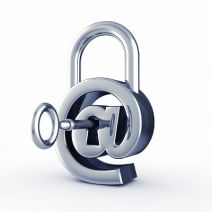 For many businesses, few parts of a network’s infrastructure are as important as the email management system. It’s a pain point for most businesses, but so many of them don’t understand how best to protect their network from the threats that come through the email medium. What kind of threats should you expect to see, and how can you best protect your business from them?
For many businesses, few parts of a network’s infrastructure are as important as the email management system. It’s a pain point for most businesses, but so many of them don’t understand how best to protect their network from the threats that come through the email medium. What kind of threats should you expect to see, and how can you best protect your business from them?
Despite the fact that email is an absolutely critical component of your business's communications, many organizations forget that the attacks that target your email infrastructure are of a much more sophisticated nature than your typical hack attack. Furthermore, for each user in your network, there’s an email inbox that’s potentially vulnerable to hacking attacks, which only serves to increase the risk of being targeted by an advanced phishing scam.
Before you can even begin to protect yourself against threats that lurk within your email, you first need to understand what you’re protecting yourself from. Most of the time, you’ll be dealing with specialized phishing attacks that are designed to bypass your spam filter by appearing to be legitimate messages. Phishing attacks are designed to gather information or spread threats like viruses, malware, spyware, and more. They will attempt to coerce sensitive credentials from your employees, and then use that information to access your network. Some of the more sophisticated phishing attacks come from hackers who are impersonating your IT department. That’s right; it’s that serious.
Spear Phishing Attacks
More dangerous than phishing attacks are spear phishing attacks. As the name implies, it specifically targets an individual using information easily gained from a brief research session or past knowledge. These attacks are often premeditated and well thought out, making them challenging to block from your network and even more difficult to protect from without taking specific precautions.
Know What to Look For
In response to these threats, you want to educate your employees about the dangers of phishing attacks, as well as maximize your network security. Your team should be able to identify a phishing attack by analyzing the content of the messages. Is it urging you to take immediate action? Is it just plain text, or does it contain images? Are there suspicious links? Is the sender unknown? All of these traits must be considered in order to avoid being tricked.
A comprehensive security solution that takes advantage of multiple layers of protection is necessary in order to both minimize and prevent phishing attacks from making it to your email inbox. With spam-blocking solutions, you can eliminate the majority of spam, which often comes attached with dangerous malware. Furthermore, a firewall and web-content filter can keep you from visiting infected websites designed to garner information from you. Give us a call at (518) 203-2110 to learn more.

